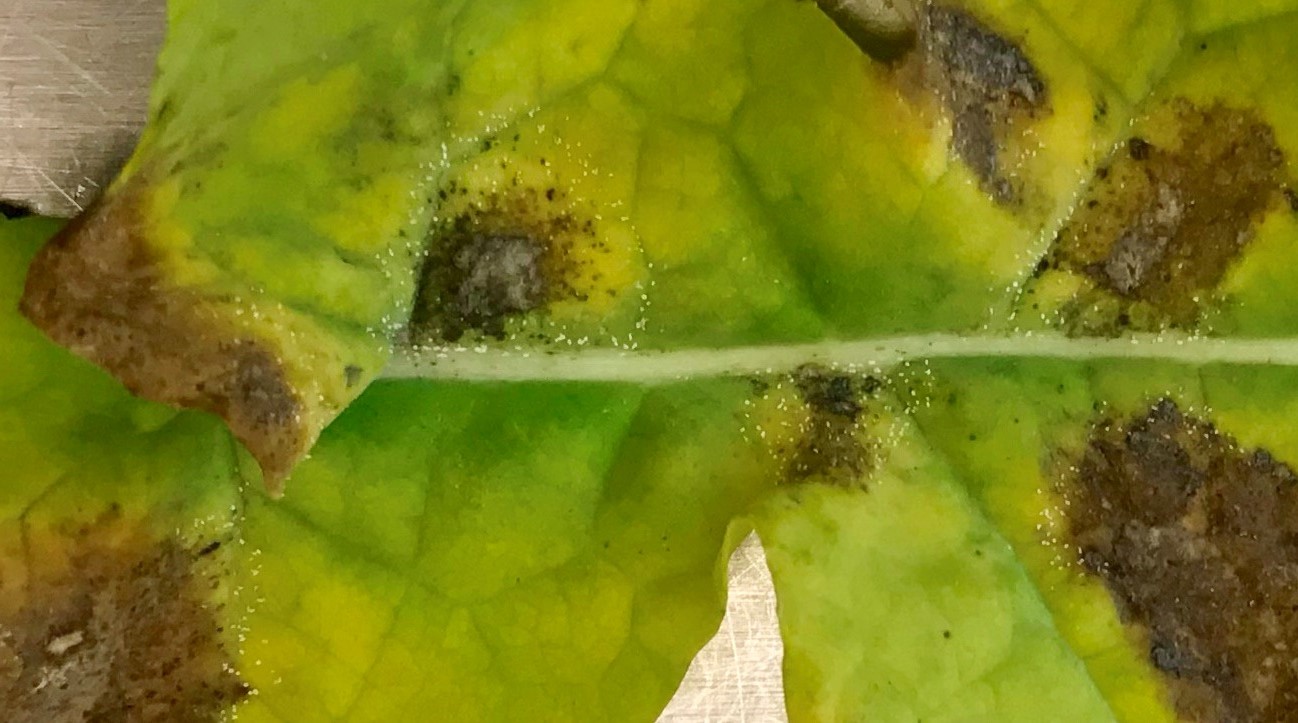The big picture: using wildflower strips for pest control
The fungus responsible for light leaf spot, the UK’s most important oilseed rape disease, is becoming increasingly resistant to azole fungicides but not QoI or SDHI fungicides.
However, despite the differences identified in laboratory testing, both azole and non-azole products are still performing similarly when applied to control light leaf spot in the field.
The lead author of a new study into its resistance status says the results support the use of a mixture of an azole plus a Qoi/SDHI for robust disease control.
Rothamsted’s Dr Kevin King said: “Azoles are still effective, but they are becoming less so and continued sensitivity monitoring is needed to ensure optimal strategies are being deployed.”
Traditionally a bigger problem in the north of the UK, light leaf spot has now become the UK’s most important disease of brassicas and can potentially reduce yields considerably if left untreated.
Light leaf spot is also major headache for brassica growers across Europe, Australia and New Zealand, and most recently the US Pacific northwest, where the disease is instead termed chlorotic leaf spot.

Published in the journal Plant Pathology, the study looked at populations throughout Europe of the fungus responsible for light leaf spot, Pyrenopeziza brassicae.
It showed increasingly complex variants of the gene targeted by azole fungicides are now widespread, and in lab testing these are far less sensitive to azole fungicides.
Regional differences were also identified within the UK, with northern populations less sensitive than southern ones.
There were also differences between different European populations – for example Danish populations were much more sensitive to azoles than either UK or German populations.
The news is better for growers in the US, with the P. brassicae population there still highly sensitive to azole, QoI and SDHI fungicides.
According to Dr King, the P. brassicae fungus shows especially high genetic diversity, which means it has a considerable ability to evolve fungicide resistance.
“However, fungicides represent only part of a disease management strategy. Integrated approaches such as the use of crop varieties with good resistance to disease, will offer flexibility with fungicide timings as well as improved disease control. Similarly, there is a need to use a range of fungicides that work in different ways, to slow the selection for resistance.”
This work was a collaborative study between Rothamsted, ADAS, and NIAB in the UK; TEAGASC in Ireland; IHAR-PIB in Poland; and Nanjing Agricultural University in China.

Plant Pathologist

Plant Pathologist; Aerobiologist
Rothamsted Research is the longest-running agricultural research institute in the world. We work from gene to field with a proud history of ground-breaking
discoveries in areas as diverse as crop management, statistical interpretation and soil health. Our founders, in 1843, were the pioneers of modern
agriculture, and we are known for our imaginative science and our collaborative approach to developing innovative farm practice.
Through independent research, we make significant contributions to improving agri-food systems in the UK and internationally, with
economic impact estimated to exceed £3 bn in annual contribution to the UK economy. Our strength lies in our systems approach, which combines strategic research,
interdisciplinary teams and multiple partnerships.
Rothamsted is home to three unique National Bioscience Research Infrastructures which are open to researchers from all over the world:
The Long-Term Experiments,
Rothamsted Insect Survey and the
North Wyke Farm Platform.
We are strategically funded by the Biotechnology and Biological Sciences Research Council (BBSRC), with additional support from other national and
international funding streams, and from industry. We are also supported by the Lawes Agricultural Trust (LAT).
The Biotechnology and Biological Sciences Research Council is part of UK Research and Innovation, a non-departmental public body funded by a grant-in-aid
from the UK government.
BBSRC invests to push back the frontiers of biology and deliver a healthy, prosperous and sustainable future. Through our investments, we build and support a vibrant,
dynamic and inclusive community which delivers ground-breaking discoveries and develops bio-based solutions that contribute to tackling global challenges,
such as sustainable food production, climate change, and healthy ageing.
As part of UK Research and Innovation (UKRI), we not only play a pivotal role in fostering connections that enable the UK’s world-class research and innovation system
to flourish – we also have a responsibility to enable the creation of a research culture that is diverse, resilient, and engaged.
BBSRC proudly forges interdisciplinary collaborations where excellent bioscience has a fundamental role. We pioneer approaches that enhance the equality, diversity,
and inclusion of talent by investing in people, infrastructure, technologies, and partnerships on a global scale.
The Lawes Agricultural Trust, established in 1889 by Sir John Bennet Lawes, supports Rothamsted Research’s national and international agricultural science through the provision of land, facilities and funding. LAT, a charitable trust, owns the estates at Harpenden and Broom's Barn, including many of the buildings used by Rothamsted Research. LAT provides an annual research grant to the Director, accommodation for nearly 200 people, and support for fellowships for young scientists from developing countries. LAT also makes capital grants to help modernise facilities at Rothamsted, or invests in new buildings.